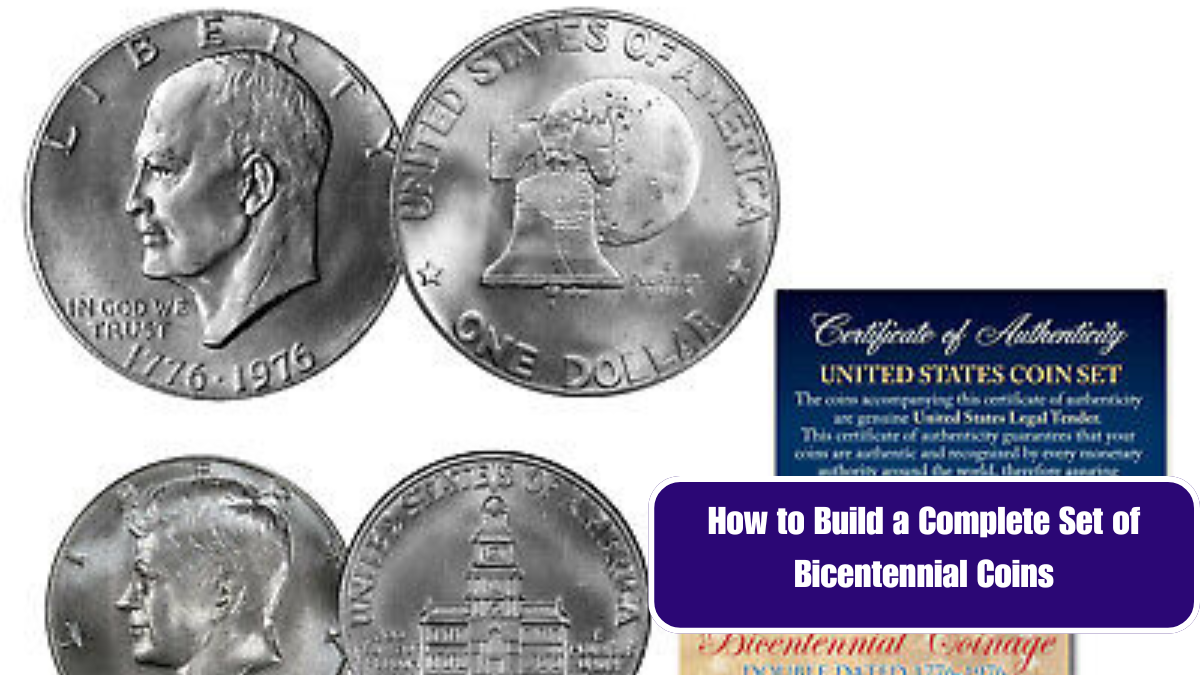The Bicentennial coins, minted in 1975 and 1976 to commemorate the 200th anniversary of American independence, are a cherished collectible for numismatists and history enthusiasts alike. This special issue included three distinct types of coins: the quarter, half dollar, and dollar, each featuring unique designs and marks of this significant anniversary. If you’re looking to build a complete set of Bicentennial coins, here’s a comprehensive guide to help you achieve this goal.
Understanding the Bicentennial Coins
1. Bicentennial Quarter (1975-1976)
- Design: The quarter features a unique reverse design by John Flanagan, depicting a colonial drummer and the Liberty Bell.
- Mint Marks: Produced at the Philadelphia (no mint mark), Denver (D), and San Francisco (S) mints.
2. Bicentennial Half Dollar (1975-1976)
- Design: The half dollar showcases a reverse design by Gabriel Lewis, featuring Independence Hall.
- Mint Marks: Also produced at Philadelphia (no mint mark), Denver (D), and San Francisco (S) mints.
3. Bicentennial Dollar (1975-1976)
- Design: The dollar coin displays a reverse design by Dennis R. Williams, showing the Liberty Bell superimposed on the moon.
- Mint Marks: Produced in Philadelphia (no mint mark) and San Francisco (S) mint, with no dollar coins minted at Denver.
Steps to Build Your Complete Set
1. Research and Plan
- Understand the Types: Familiarize yourself with the designs and mint marks of each coin. Study high-quality images to recognize the subtle differences between the coins from different mints.
- Budget: Determine your budget as coin prices can vary significantly based on their condition and rarity.
2. Acquire the Coins
- Coin Shops: Visit local coin shops and dealers who specialize in collectible coins. They can offer a variety of conditions and mint marks.
- Online Auctions: Platforms like eBay, Heritage Auctions, and others can be good sources. Make sure to verify the authenticity and condition before purchasing.
- Coin Shows: Attend coin shows where you can find many dealers in one place and possibly better deals.
3. Verify Authenticity
- Certification: For high-value coins or for peace of mind, consider buying coins that are certified by professional grading services like PCGS or NGC.
- Condition: Check for details on grading systems (e.g., MS-65, AU-50) and ensure the coins meet your collection standards.
4. Store Your Coins Properly
- Coin Holders: Use coin holders, such as flips, holders, or slabs, to protect your coins from damage and wear.
- Storage Environment: Keep the coins in a cool, dry place, away from direct sunlight and humidity.
5. Track and Organize Your Collection
- Inventory: Maintain a detailed inventory of your collection, including mint marks, conditions, and acquisition details.
- Display: Consider investing in a display case or album to showcase your collection attractively and keep it organized.
6. Stay Informed
- Join Numismatic Societies: Engaging with numismatic communities, both online and offline, can provide valuable insights and updates on market trends.
- Read Publications: Subscribe to coin magazines or journals for the latest news and tips on collecting.
Building a complete set of Bicentennial coins is a rewarding endeavor that combines historical appreciation with numismatic enjoyment. By understanding the unique aspects of each coin, carefully acquiring them, and maintaining their condition, you can create a collection that not only reflects a significant moment in American history but also stands as a testament to your dedication and passion for coin collecting.
